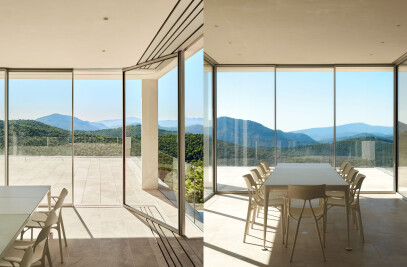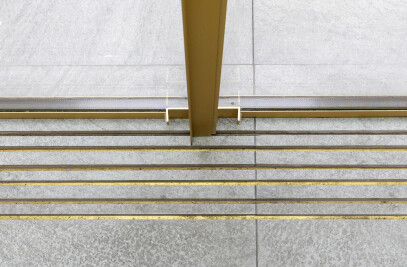Neri&Hu Design and Research Office are known for adaptive reuse projects. Their latest conversion in Shanghai elevates the mundane by transforming a small complex of ex-industrial buildings in the middle of Shanghai’s busy Jing’an Temple area into a creative interdisciplinary space with a total design vision down to the smallest details.

The central component of the renovation strategy was a complete reimagining of the main façade. The repetitive windows of the existing building are partially infilled with glass bricks while new operable windows visually unified with a black metal frame on the ground floor create the look of long ribbon windows.

The upper part of the building is refreshed with a dark coat of grey paint, while the ground floor takes a more aggressive approach. Glazed green tiles clad the existing rounded staircase and one end of the building and continue across an undulating ground floor wall the span’s the base of the building. The eye-catching wall feature dips in and out to signify building access points while a canopy atop the ground floor creates a visual break between the entry-level and upper levels while offering a welcoming feature.

Another key move in the renovation strategy was the retention of the existing concrete post and beam structure. But going a step further than mere retention, the beams and columns are celebrated by leaving them in their original state, with flaws and industrial roughness fully exposed.

The structural grid remains intact, with several selective cuts made into slabs to create dramatic double-height spaces. The additional cut-outs also allow for an internal staircase between the third and fourth floors, opening up a greater connection and sense of volume between floors.

Between the columns, steel and ribbed glass enclosures were added, along with white box volumes that accommodate additional support space. New and old sit in stark contrast, the building’s past never concealed.

The new building functions as a kind of ‘design commune,’ a shared space where tenants are assembled into a curated sampling of creative platforms that could range from bakeries to furniture brands to design offices. Neri& Hu themselves occupy the third and fourth floors while Design Repulic offices occupy the second floor. Seamless integration from the infill structures right down to the furniture and even graphic signage is present throughout.


































